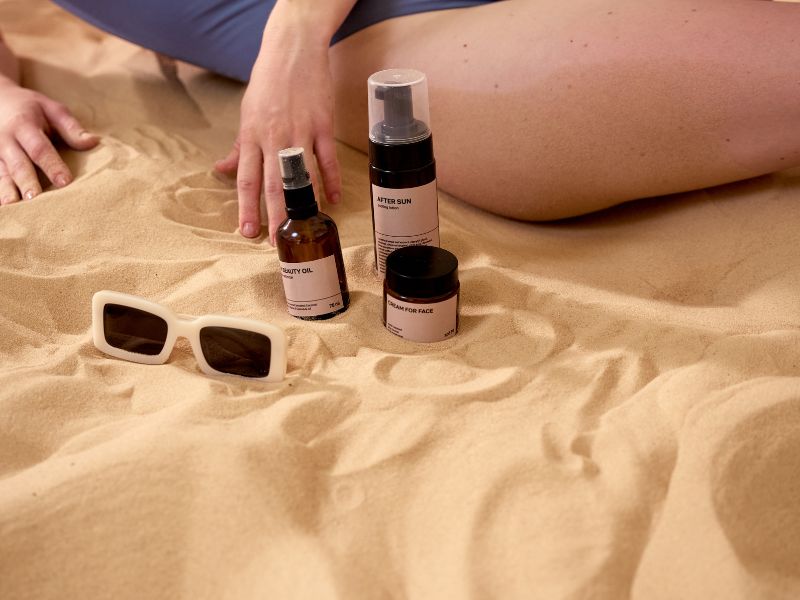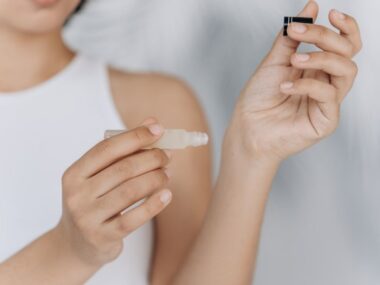In recent years, the discussion surrounding mineral versus chemical sunscreens has gained significant traction among skincare enthusiasts, dermatologists, and the general public alike. La Roche-Posay, a French skincare brand that combines scientific innovation with dermatological expertise, is often lauded for its high-quality, dermatologist-recommended sunscreens. With a variety of sunscreen products in its lineup, many consumers find themselves wondering whether La Roche-Posay’s sunscreens fall under the mineral or chemical category and what implications this distinction may have for skin health, environmental impact, and efficacy. This article provides an in-depth exploration of the different types of La Roche-Posay sunscreens, focusing on the ingredients, application benefits, and considerations for selecting the best product to protect skin health.
Understanding the Basics: Mineral Sunscreens vs. Chemical Sunscreens
Before diving into the specifics of La Roche-Posay products, it is important to understand the difference between mineral and chemical sunscreens. Both types of sunscreens are effective in protecting the skin from harmful ultraviolet (UV) rays, but they achieve this through distinct mechanisms:
- Mineral Sunscreens: Also known as physical sunscreens, these formulations typically include active mineral ingredients such as zinc oxide and titanium dioxide. When applied to the skin, mineral sunscreens form a protective layer on the surface that physically reflects and scatters UV rays away from the skin. This type of sunscreen generally begins working immediately upon application.
- Chemical Sunscreens: These sunscreens contain organic (carbon-based) compounds, such as avobenzone, oxybenzone, octinoxate, and homosalate, which absorb UV radiation. Chemical sunscreens convert UV rays into heat, which is then released from the skin. They generally require 15–20 minutes after application to start providing effective sun protection.
Each type of sunscreen has its advantages and potential drawbacks, particularly in terms of sensitivity, environmental impact, and formulation feel. With this foundation, we can delve into the specifics of La Roche-Posay’s sunscreen offerings.
La Roche-Posay Sunscreens: A Blend of Mineral and Chemical Options
La Roche-Posay offers a wide variety of sunscreens, including both mineral and chemical formulations. The choice between these types is primarily influenced by individual skin needs, sensitivity, and preferences. The brand’s sunscreens are grouped into two main lines:
- Anthelios Line: Known for its high protection factor and lightweight texture, the Anthelios line primarily includes chemical sunscreens designed for different skin types, including sensitive skin and acne-prone skin.
- Mineral Line: Designed to cater to users with extremely sensitive skin, including those who may have reactions to chemical sunscreen ingredients, La Roche-Posay’s mineral sunscreens offer broad-spectrum protection using only mineral-based active ingredients.
Chemical Sunscreens in La Roche-Posay’s Anthelios Line
The La Roche-Posay Anthelios line features several chemical sunscreens that are formulated for a range of skin types and preferences. These products often include Mexoryl SX and Mexoryl XL, patented sunscreen agents that provide broad-spectrum protection and stability, a common issue with other chemical UV filters. Some notable products in the Anthelios line include:
- Anthelios Melt-in Milk Sunscreen SPF 100: This is a high-SPF product designed for intense sun exposure and suitable for all skin types. It is formulated with a range of chemical filters, including avobenzone and homosalate, to provide broad-spectrum protection while being lightweight and fast-absorbing.
- Anthelios Clear Skin Dry Touch Sunscreen SPF 60: Aimed at acne-prone and oily skin types, this sunscreen is formulated with silica and perlite to help absorb excess oil and reduce shine, making it ideal for daily wear. It also includes chemical UV filters like avobenzone and octocrylene.
- Anthelios Ultra-Light Fluid SPF 50+: Known for its ultra-light texture and matte finish, this product is suitable for those who prefer a lightweight feel and is particularly popular among those with sensitive or combination skin. It uses a combination of chemical filters for reliable protection without the heavy feel that mineral sunscreens sometimes leave.
These chemical sunscreens are specifically formulated to minimize irritation, even in individuals with sensitive skin, by eliminating potentially irritating preservatives and using non-comedogenic formulas. However, chemical sunscreens may not be ideal for those with extremely sensitive or reactive skin, as certain chemical filters can cause reactions in susceptible individuals.
Mineral Sunscreens in La Roche-Posay’s Mineral Line
For individuals seeking mineral-only sunscreen options, La Roche-Posay offers formulations that are designed to be gentle on the skin while still providing high levels of sun protection. Some key mineral sunscreens include:
- Anthelios Mineral SPF 50 Gentle Lotion: This sunscreen uses zinc oxide and titanium dioxide as active ingredients, providing broad-spectrum protection without any chemical filters. It is suitable for sensitive and reactive skin and is free from fragrances and parabens. While it can leave a slight white cast due to its mineral content, it is often favoured by those who experience irritation with chemical sunscreens.
- Anthelios Mineral Tinted Ultra-Fluid SPF 50: For individuals who want the benefits of a mineral sunscreen without the typical white cast, this tinted formula provides a slight tint to blend more naturally with skin tones. It includes zinc oxide as the primary active ingredient and is formulated for sensitive and normal-to-combination skin types.
- La Roche-Posay Mineral Sunscreen SPF 50 Face Mist: This innovative mineral sunscreen mist combines ease of application with zinc oxide’s mineral protection. This option is ideal for reapplication throughout the day without the need to disturb makeup, which makes it especially popular for on-the-go use.
Key Ingredients in La Roche-Posay’s Mineral and Chemical Sunscreens
The choice of ingredients in each La Roche-Posay sunscreen plays a crucial role in its overall efficacy, feel, and suitability for different skin types. Below are some of the primary ingredients and their purposes in the brand’s sunscreen formulations:
- Zinc Oxide and Titanium Dioxide: Used in mineral sunscreens, these provide broad-spectrum protection and are gentle on sensitive skin. Zinc oxide is also known for its anti-inflammatory properties, making it beneficial for acne-prone or irritated skin.
- Mexoryl SX and Mexoryl XL: These patented chemical UV filters are known for their stability and efficacy in protecting against both UVA and UVB rays. They are commonly found in the Anthelios line and offer strong, photostable protection that doesn’t degrade quickly under sun exposure.
- Antioxidants: Many La Roche-Posay sunscreens include antioxidants like Vitamin E to protect the skin from free radical damage, which is often accelerated by UV exposure. These ingredients not only enhance sun protection but also provide additional anti-ageing benefits.
- Thermal Spring Water: La Roche-Posay incorporates its signature thermal spring water in many of its products, including sunscreens. Known for its soothing and antioxidant properties, this ingredient is especially beneficial for those with sensitive skin or conditions such as eczema and rosacea.
Factors to Consider When Choosing Between Mineral and Chemical Sunscreens
Given the array of options available from La Roche-Posay, selecting the best sunscreen depends on individual preferences and skin needs. Here are some factors to consider when deciding between mineral and chemical sunscreen formulations:
- Skin Sensitivity: Mineral sunscreens are often better suited for individuals with highly sensitive skin, as they are less likely to irritate. For those with conditions like rosacea or eczema, mineral-based options are typically preferred to minimize any potential reactivity.
- White Cast: While chemical sunscreens tend to blend into the skin without leaving a residue, mineral sunscreens can leave a white or ashy cast, particularly on darker skin tones. La Roche-Posay’s tinted mineral options, such as the Mineral Tinted Ultra-Fluid SPF 50, offer a compromise for those who want mineral protection with a more seamless finish.
- Application and Texture: Chemical sunscreens often offer a lighter, more fluid texture that absorbs quickly and dries clear, making them more popular for everyday wear, particularly under makeup. Mineral sunscreens, while thicker, are typically more effective immediately upon application and may be ideal for outdoor activities where reapplication is challenging.
- Environmental Impact: Mineral sunscreens are generally considered more environmentally friendly, particularly concerning coral reefs. Ingredients like oxybenzone and octinoxate in some chemical sunscreens have been found to contribute to coral bleaching. La Roche-Posay’s mineral sunscreens are free from these reef-harming ingredients, which can be a deciding factor for eco-conscious consumers.
Conclusion
La Roche-Posay offers a comprehensive range of sunscreens that cater to both preferences: chemical sunscreens in the Anthelios line and mineral options in their Mineral line. The choice between mineral and chemical largely depends on factors like skin sensitivity, texture preferences, environmental considerations, and the desired aesthetic finish.
For consumers seeking high-efficacy, dermatologist-approved sun protection with minimal irritation, La Roche-Posay provides effective options across both mineral and chemical categories. Whether you opt for a lightweight, non-greasy chemical sunscreen from the Anthelios line or a gentle mineral option for sensitive skin, La Roche-Posay has crafted products that prioritize skin health, protection, and user satisfaction.






